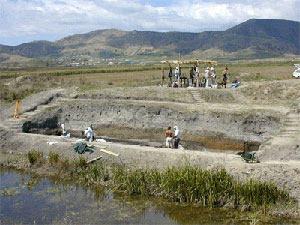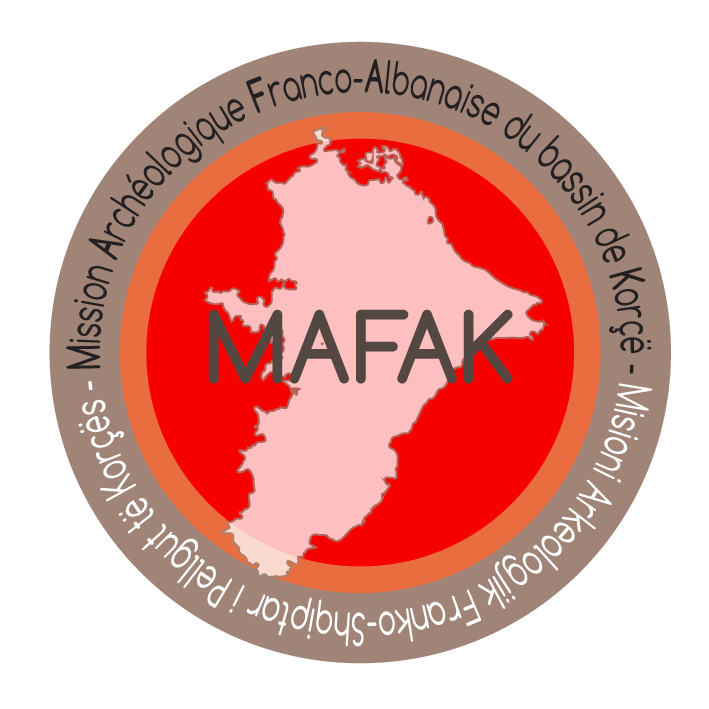
From 1993 to 2006, the Mission excavated a prehistoric lake dwelling near the village of Sovjan, some 15 km north of the town of Korçë, on the western shore of the ancient Lake Maliq, which dried up in the mid-twentieth century. The excavations, which are currently being published, have uncovered levels of lake dwellings, the oldest of which date back to the very beginning of the Neolithic period (7th millennium), while the best-documented ones form an almost continuous sequence from the end of the Early Bronze Age (end of the 3rd millennium) to the beginning of the Iron Age (around 700 BC), at which time the site was covered by the waters of the lake and definitively abandoned.
The interest of the Sovjan site lies, on the one hand, in the presence of exceptionally well-preserved remains of Bronze Age wooden buildings; on the other hand, in the unpublished chronological data that it provides thanks to some forty radiocarbon dates and a dendrochronological sequence covering more than four centuries; finally, in the abundance and quality of the archaeological material (ceramics, lithic and bone tools, etc.) and the palaeoenvironmental data. ) and paleoenvironmental data (on the fauna, flora, soils, climate, etc.) collected during the excavations and several coring campaigns.
The site of Sovjan
The modern village of Sovjan is located in the Korçë basin (altitude 820 m), about 15 km north of the town of Korçë. The archaeological site itself is located about 800 m south-east of the village. It was discovered by chance in the 1980s when a canal was dug to drain the waters of this marshy region, cutting the site in two. It is close to the archaeological site of Maliq, excavated in the 1960s by Albanian archaeologists. These two sites are lacustrine habitats, i.e. located on the shore of a lake. Before the reclamation works that made it disappear at the beginning of the 1960s, Lake Maliq occupied the whole northern part of the Korçë basin.
A large number of wooden architectural elements belonging to the houses of this lake village were discovered during the excavations, as well as a large number of objects, which are the direct traces of the organisation of life in prehistoric and protohistoric times. The site has known several major periods of occupation: the oldest dates from the beginning of the Neolithic period, i.e. from the beginning of the 7th millennium BC (-7000), the most recent from the Iron Age, i.e. from the middle of the 1st millennium BC (-700). But the main remains of the Sovjan site date from the Middle Bronze Age, between 2200 and 1500 BC.
It is a low-lying tell of elliptical shape, measuring about 160 m (north-south) by 120 m (east-west) and culminating at 818 m above sea level, just 2 m above the average level of the surrounding plain.
A 16m wide canal running north-east/south-west, with banks sloping at 23 degrees, runs through the middle.
The soil brought to the surface when the canal was dug, reworked and more or less levelled by agricultural work, has somewhat altered the original profile of the tell, which was probably a little more marked.



